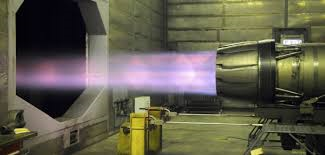
Breaking News
 Iran Regime Kills Protesters as Unrest and Calls for Regime Change Spread Nationwide
Iran Regime Kills Protesters as Unrest and Calls for Regime Change Spread Nationwide
 Trump, Treason, and the New York Times
Trump, Treason, and the New York Times
 Democrat idiocy at work in San Francisco
Democrat idiocy at work in San Francisco
 BREAKING THROUGH Tesla AI in 2026
BREAKING THROUGH Tesla AI in 2026
Top Tech News
 Laser weapons go mobile on US Army small vehicles
Laser weapons go mobile on US Army small vehicles
 EngineAI T800: Born to Disrupt! #EngineAI #robotics #newtechnology #newproduct
EngineAI T800: Born to Disrupt! #EngineAI #robotics #newtechnology #newproduct
 This Silicon Anode Breakthrough Could Mark A Turning Point For EV Batteries [Update]
This Silicon Anode Breakthrough Could Mark A Turning Point For EV Batteries [Update]
 Travel gadget promises to dry and iron your clothes – totally hands-free
Travel gadget promises to dry and iron your clothes – totally hands-free
 Perfect Aircrete, Kitchen Ingredients.
Perfect Aircrete, Kitchen Ingredients.
 Futuristic pixel-raising display lets you feel what's onscreen
Futuristic pixel-raising display lets you feel what's onscreen
 Cutting-Edge Facility Generates Pure Water and Hydrogen Fuel from Seawater for Mere Pennies
Cutting-Edge Facility Generates Pure Water and Hydrogen Fuel from Seawater for Mere Pennies
 This tiny dev board is packed with features for ambitious makers
This tiny dev board is packed with features for ambitious makers
 Scientists Discover Gel to Regrow Tooth Enamel
Scientists Discover Gel to Regrow Tooth Enamel
 Vitamin C and Dandelion Root Killing Cancer Cells -- as Former CDC Director Calls for COVID-19...
Vitamin C and Dandelion Root Killing Cancer Cells -- as Former CDC Director Calls for COVID-19...
Leaked NASA Paper Suggests The 'Impossible' EM Drive Really Does Work

While it's important to note that the results that have been leaked haven't been published in an academic journal, they do suggest that the system works and is capable of generating force of 1.2 millinewtons per kilowatt in a vacuum. ScienceAlert reports: The paper concludes that, after error measurements have been accounted for, the EM Drive generates force of 1.2 millinewtons per kilowatt in a vacuum. That's not an insignificant amount -- to put it into perspective, the super-powerful Hall thruster generates force of 60 millinewtons per kilowatt, an order of magnitude more than the EM Drive. But the Hall thruster uses fuel and requires a spacecraft to carry heavy propellants, and that extra weight could offset the higher thrust, the NASA Eagleworks team conclude in the paper. Light sails on the other hand, which are currently the most popular form of zero-propellant propulsion, use beams of sunlight to propel them forward rather than fuel. And they only generate force up to 6.67 micronewtons per kilowatt - two orders of magnitude less than NASA's EM Drive, says the paper. The NASA Eagleworks team measured the EM Drive's force using a low thrust pendulum at the Johnson Space Centre, and the tests were performed at 40, 60, and 80 watts. They were looking for any sign that the thrust could be a result of another anomaly in the system, but for now, that doesn't appear to be the case.



